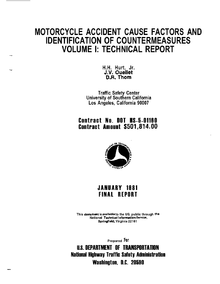Report
This is Wikipedia's current article for improvement – and you can help edit it! You can discuss how to improve it on its talk page and ask questions at the help desk or Teahouse. See the cheatsheet, tutorial, editing help and FAQ for additional information. Editors are encouraged to create a Wikipedia account and place this article on their watchlist.
Find sources: "Report" – news · newspapers · books · scholar · JSTOR |
This article has multiple issues. Please help improve it or discuss these issues on the talk page. (Learn how and when to remove these messages)
|

A report or account is an informational work, such as writing, speech, television or film, made with the intention of relaying information or recounting certain events in a widely presentable form.[1]
Description
A report is an informational work made with the specific intention of relaying information or recounting certain events in a way that is concise, factual and relevant to the audience at hand. Reports may be conveyed through a written medium, speech, television, or film. In professional spheres, reports are a common and vital communication tool. Additionally, reports may be official or unofficial, and can be listed publicly or only available privately depending on the specific scenario. The audience for a report can vary dramatically, from an elementary school classroom to a boardroom on Wall Street.
Usage
Reports fill a vast array of informational needs for a spectrum of audiences. Reports may be used to keep track of information, evaluate a strategy, or make decisions. Written reports are documents which present focused and salient content, generally to a specific audience. An example of an official report would be a police report, which could have legally binding consequences. Other types of reports, like Consumer Reports, inform the public about the quality of products available on the market. Reports are used in government, business, education, science, and other fields, often to display the results of an experiment, investigation, or inquiry.
Attributes
One of the most common formats for presenting reports is IMRAD--introduction, methods, results, and discussion. This structure, standard for the genre, mirrors traditional publication of scientific research and summons the ethos and credibility of that discipline. Reports are not required to follow this pattern and may use alternative methods such as the problem-solution format, wherein the author first lists an issue and then details what must be done to fix the problem. Transparency and a focus on quality are keys to writing a useful report. Accuracy is also important. Faulty numbers in a financial report could lead to disastrous consequences.
Standard Elements
Reports use features such as tables, graphics, images, voice, or specialized vocabulary in order to persuade a specific audience to undertake an action or inform the reader of the subject at hand. Some common elements of written reports include headings to indicate topics and help the reader locate relevant information quickly, and visual elements such as charts, tables and figures, which are useful for breaking up large sections of text and making complex issues more accessible. Lengthy written reports will almost always contain a table of contents, appendices, footnotes, and references. A bibliography or list of references will appear at the end of any credible report and citations are often included within the text itself. Complex terms are explained within the body of the report or listed as footnotes in order to make the report easier to follow. A short summary of the report's contents, called an abstract, may appear in the beginning so that the audience knows what the report will cover. Online reports often contain hyperlinks to internal or external sources as well.
Verbal reports differ from written reports in the minutiae of their format, but they still educate or advocate for a course of action. Quality reports will be well researched and the speaker will list their sources if at all possible.
Types
Some examples of reports are:
- annual reports
- auditor's reports
- book reports
- bound reports
- retail reports
- census reports
- credit reports
- demographic reports
- expense report
- experience report
- inspection reports
- military reports
- police reports
- policy reports
- progress reports
- investigative reports
- scientific reports
- trip reports
- white papers
- appraisal reports
- workplace reports[2]
See also
- Customer relationship management
- Data quality
- Decision support system
- Enterprise application integration
- Enterprise resource planning
- Global Reporting Initiative
- Grey Literature International Steering Committee – International guidelines for the production of scientific and technical reports
- Management information system
- Reporting (disambiguation)
References
- ^ "Report - definition of report by The Free Dictionary". TheFreeDictionary.com.
- ^ "Report". archive.org.[unreliable source?]
Further reading
- Blicq, Ronald (2003). "Technically-Write!". Prentice Hall. ISBN 0-13-114878-8.
- Gerson, Sharon and Gerson, Steven (2005). Technical Writing: Process and Product. Prentice Hall. ISBN 0-13-119664-2.
- Lannon, John (2007). Technical Communication. Longman. ISBN 0-205-55957-3.
